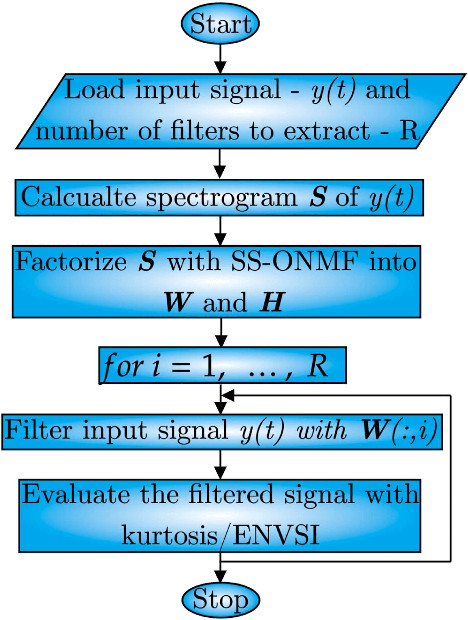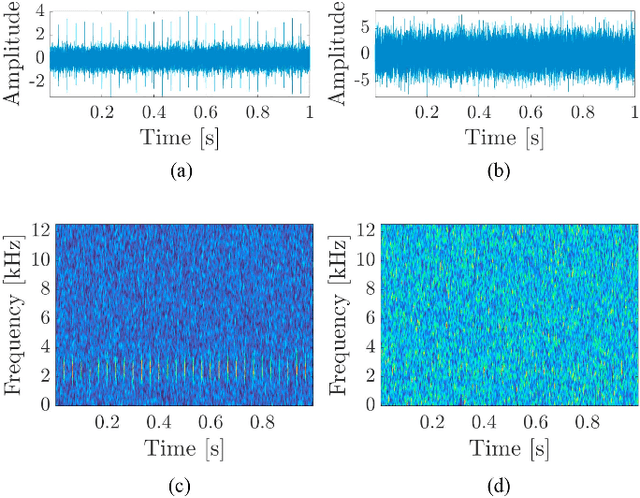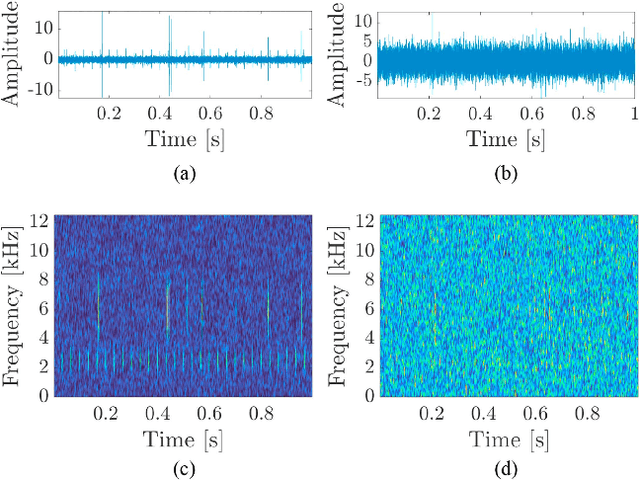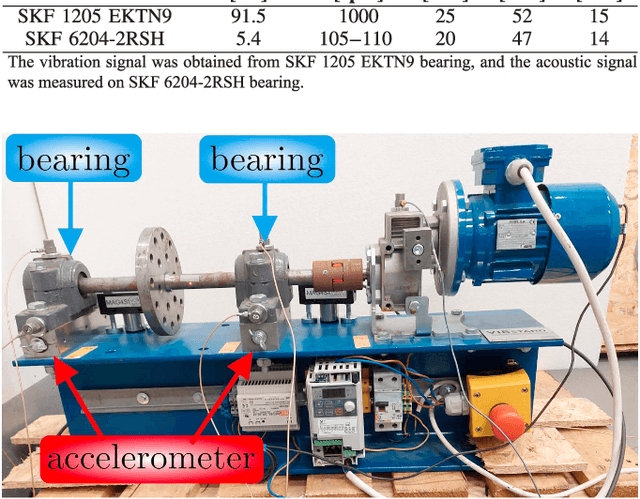Rafal Zdunek
Sparse Hyperparametric Itakura-Saito NMF via Bi-Level Optimization
Feb 25, 2025Abstract:The selection of penalty hyperparameters is a critical aspect in Nonnegative Matrix Factorization (NMF), since these values control the trade-off between the reconstruction accuracy and the adherence to desired constraints. In this work, we focus on an NMF problem involving the Itakura-Saito (IS) divergence, effective for extracting low spectral density components from spectrograms of mixed signals, enhanced with sparsity constraints. We propose a new algorithm called SHINBO, which introduces a bi-level optimization framework to automatically and adaptively tune the row-dependent penalty hyperparameters, enhancing the ability of IS-NMF to isolate sparse, periodic signals against noise. Experimental results showed SHINBO ensures precise spectral decomposition and demonstrates superior performance in both synthetic and real-world applications. For the latter, SHINBO is particularly useful, as noninvasive vibration-based fault detection in rolling bearings, where the desired signal components often reside in high-frequency subbands but are obscured by stronger, spectrally broader noise. By addressing the critical issue of hyperparameter selection, SHINBO advances the state-of-the-art in signal recovery for complex, noise-dominated environments.
Bearing damage detection with orthogonal and non-negative low-rank feature extraction
Mar 19, 2024



Abstract:Local damage of bearings can be detected as a weak cyclic and impulsive component in a highly noisy measured signal. A key problem is how to extract the signal of interest (SOI) from the raw signal, i.e., how to identify and design an optimal filter. To tackle this problem, we propose to use stochastic sampled orthogonal non-negative matrix factorization for extracting frequency-based features from a spectrogram of the measured signal. The proposed algorithm finds a selective filter that is tailored to the frequency band of the SOI. We show that our approach outperforms the other state-of-the-art selectors that were previously used in condition monitoring. The efficiency of the proposed method is illustrated using both a simulation study and the following real signals: (a) vibration signal from a test rig in the laboratory and (b) acoustic signal from a belt conveyor.
Non-negative tensor factorization for vibration-based local damage detection
Mar 19, 2024Abstract:In this study, a novel non-negative tensor factorization (NTF)-based method for vibration-based local damage detection in rolling element bearings is proposed. As the diagnostic signal registered from a faulty machine is non-stationary, the time-frequency method is frequently used as a primary decomposition technique. It is proposed here to extract multi-linear NTF-based components from a 3D array of time-frequency representations of an observed signal partitioned into blocks. As a result, frequency and temporal informative components can be efficiently separated from non-informative ones. The experiments performed on synthetic and real signals demonstrate the high efficiency of the proposed method with respect to the already known non-negative matrix factorization approach.
Non-negative matrix underapproximation as optimal frequency band selector
Mar 19, 2024



Abstract:Time-frequency representation (TFR) is often used for non-stationary signal analysis. The most intuitive and interpretable TFR is the spectrogram. Recently, a concept of non-negative matrix factorization (NMF) has been successfully applied to local damage detection in rolling elements of bearings via spectrogram factorization. NMF applied to the spectrogram allows one to find an informative frequency band, which could be further used as a filter characteristic. However, the obtained filter characteristics mostly detect the informative frequency band, which also encompasses a lot of noise. In the case where noise is more problematic, as is the case for acoustic signals from industrial machines, the NMF hardly detects the damage. To solve this problem and obtain more selective filters, which are more robust to noise, we propose the non-negative matrix under-approximation (NMU) as an informative frequency band selector. Due to the more sparse parts-based representation of the NMU compared to NMF, NMU provides more selective filter characteristics, which neglect the non-informative frequency bands related to the noise. In practice, it means that NMU gives a better signal-to-noise ratio for the filtered signal. The efficiency of the proposed approach has been validated on the vibration signal from the test rig and the acoustic signal from an idler.
 Add to Chrome
Add to Chrome Add to Firefox
Add to Firefox Add to Edge
Add to Edge